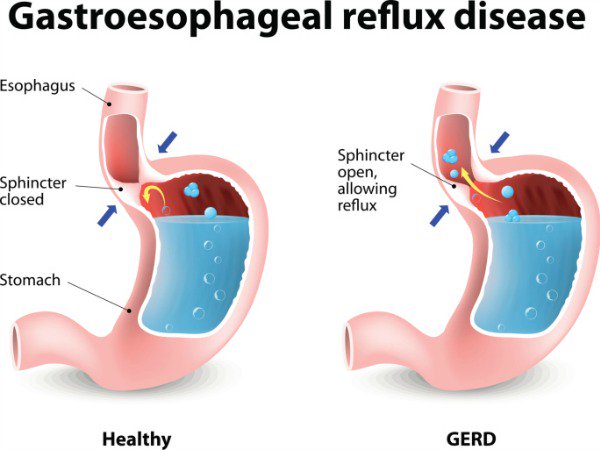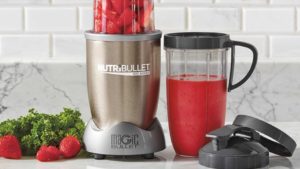
Diagnosed with Cancer? Your two greatest challenges are understanding cancer and understanding possible side effects from chemo and radiation. Knowledge is Power!
Learn about conventional, complementary, and integrative therapies.
Dealing with treatment side effects? Learn about evidence-based therapies to alleviate your symptoms.
Click the orange button to the right to learn more.
- You are here:
- Home »
- Blog »
- non-conventional therapies »
- GERD Smoothies
GERD Smoothies

“Gastrointestinal reflux disease (GERD) occurs when a person experiences repeated episodes of the stomach contents flowing backward into the esophagus, or food pipe. People can make smoothies that may help relieve GERD symptoms.”
Gastrointestinal reflux disease is not cancer. However, GERD increases your risk of barrett’s esophagus (BE) which increases your risk of esophageal cancer.
GERD affects your quality of life and BE really affects your quality of life. My point in all this is that it is in your best interest to heal/prevent GERD. Especially when the therapies are cheap and easy.
The five recipes for the GERD patient outlined below are what I mean when I say “cheap and easy.”
I am a survivor of a very different type of cancer called multiple myeloma. I have been researching GERD because radiation to my neck weakened swallowing muscles allowing stomach acid to leak into my throat occasionally. I don’t want to develop GERD, or BE and I certainly don’t want anything to do with esophageal cancer.
In addition to smoothies shown to heal GERD, consider supplementing with curcumin. Curcumin supplementation has been shown to protect against barrett’s esophagus, others.
One last thing. I am not much of a cook. Smoothie making, for me anyway, must also be easy. I use a nutribullet when I make smoothies. Easy to clean up too.
- To Learn More about Smoothies and Juicing for the Myeloma Patient- click now
- To Learn More About GERD- click now
Scroll down the page, post a question or comment and I will reply to you ASAP.
Thanks,
David Emerson
- Cancer Survivor
- Cancer Coach
- Director PeopleBeatingCancer
Recommended Reading:
- I have Barrett’s Esophagus- what are my options?
- Barrett’s Esophagus- Diagnosis, Prognosis and Treatment
- Ask the Cancer Coach-“Stage 4 esophageal cancer diagnosis and treatment”
5 smoothie recipes for GERD
“Gastrointestinal reflux disease (GERD) occurs when a person experiences repeated episodes of the stomach contents flowing backward into the esophagus, or food pipe. People can make smoothies that may help relieve GERD symptoms.
They can choose ingredients from a list of foods doctors recommend for the condition. These include healthy fats, such as avocados, and high fiber foods, such as oats, fruits, and vegetables.
When making smoothies, it is also important to avoid foods that trigger flare-ups. These may include citrus fruits, tomatoes, chocolate, and spices.
GERD affects about 20%Trusted Source of individuals in the United States. It may cause symptoms such as a painful burning in the middle of the chest or problems with swallowing.
Read more for smoothie recipes that can help people with GERD.
According to the International Foundation for Gastrointestinal Disorders, these changes involve eating nutritious foods that promote better digestive health and avoiding foods that trigger flare-ups. If a person selects ingredients for smoothies from the list of dietary groups below, it may help them manage GERD symptoms.
Fiber
Doctors advise eating high fiber foods. These include fruits, vegetables, nuts, seeds, and whole grains.
A small 2018 studyTrusted Source investigated how adding fiber to the diet may affect GERD symptoms. It involved 36 people with non-erosive gastroesophageal reflux disease (NERD), a type of GERD in which the esophagus does not experience harm from stomach acids.
Before the study, the participants ate a low fiber diet. After adding 12.5 grams (g) of fiber per day to their diets, they experienced:
- reduced frequency of GERD symptoms
- decreased gastroesophageal refluxes
- increased lower esophageal sphincter resting pressure
The lower esophageal sphincter releases to allow food to pass from the esophagus to the stomach and then closes to prevent food from going in the opposite direction. When the resting pressure is too low, the sphincter is less effective, worsening reflux.
Fruits and vegetables
People with GERD can also benefit from eating more fruits and vegetables.
Research from 2017Trusted Source examined how eating fruits and vegetables may affect the incidence of GERD. After evaluating the diets of nearly 4,000 adults, the authors of the study found an inverse relationship between fruit and vegetable intake and GERD. This means that the more of these foods people ate, the lower the incidence of the condition.
One possible reason for this link is the high fiber content of fruits and vegetables. Fiber also binds to nitric oxide, a compound that can relax the lower esophageal sphincter, promoting reflux. When the fiber binds to nitric oxide, it lessens this effect.
Healthy fats
Fat is an essential nutrient. People should try to consume more unsaturated fats from nutritious foods instead of saturated and trans fats.
Foods with healthy fats that would make nutritious ingredients in smoothies include:
- avocados
- nuts
- seeds
- nut and seed butter
An older 2011 studyTrusted Source looked at the association between types of dietary fat and reflux. It found no link between plant-based fats and the condition.
Dairy
There are some inconsistencies among research and health oversight organizations regarding dairy foods and GERD.
The Academy of Nutrition and Dietetics advocates substituting low fat dairy foods for full fat options. However, the evidence was inconclusive in a 2022 studyTrusted Source that noted high consumption of dairy foods is usually associated with worsened GERD symptoms.
To gain greater clarity, the authors of this study compared the effects of eating full fat dairy, low fat dairy, and no dairy. Data analysis from the study indicated that eating three servings of full or low fat dairy per day does not affect GERD symptoms.
Foods to avoid in smoothies
While fruits and vegetables are good sources of fiber and nutrients, some of them can trigger flare-ups. These include citrus fruits, tomatoes, onions, and garlic.
Some smoothie recipes call for ice cubes or frozen fruit, but a 2021 reviewTrusted Source notes a link between cold food and NERD. A person with NERD may want to avoid frozen smoothie ingredients.
Additionally, although many recipes include spices such as cinnamon, an older 2001 studyTrusted Sourcestates that these ingredients may cause problems in people with reflux conditions.
People should also avoid adding these GERD triggers to smoothies:
- chocolate
- caffeinated beverages
- carbonated beverages
- alcohol
- peppermint
It is quick and easy to make nutritious smoothies for GERD. A person can try one of the options below or create their own.
To make each smoothie, chop the ingredients where necessary and blend them together in a high speed blender.
Mango oatmeal smoothie
This tropical smoothie contains:
- 1 cup coconut milk
- ½ cup rolled oats
- 1 mango
- 1 teaspoon vanilla extract
- ½ teaspoon maple syrup
Banana blueberry smoothie
This nutritious smoothie contains:
- 1 cup unsweetened almond milk
- ½ cup blueberries
- 1 banana
- 1 cup spinach
- 1 tsp chia seeds
- ½ tsp maple syrup
Melon smoothie
This refreshing, hydrating smoothie contains:
- 1 cup coconut water
- ¾ cup chopped melon
- 2 tbsp natural, unsweetened peanut butter
- 1 tsp flaxseeds
Carrot banana smoothie
This balanced, plant-based smoothie contains:
- 1 cup unsweetened almond milk
- 1 banana
- 2 carrots
- 2 dates
- 1 tsp chia seeds
Tropical smoothie
This sweet, creamy smoothie contains:
- 1 cup coconut milk
- ⅓ avocado
- 1 cup chopped pineapple
- 1 banana
- ½ tsp maple syrup
Making smoothies with certain ingredients can help relieve GERD symptoms. People can focus on high fiber ingredients such as oats, seeds, fruits, and vegetables.
It is best to avoid using very cold ingredients and those that can trigger GERD. These include acidic foods such as citrus fruits and tomatoes, as well as spices, chocolate, and caffeine.



